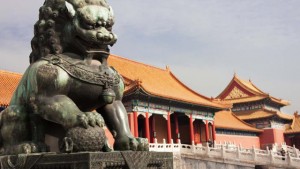Home » Commentary » Opinion » Why China axing its one-child policy won’t make any difference
· Daily Telegraph
 The recent axing of China’s one-child policy has revived the debate on population growth and its impact on Earth’s natural resources. Yet history teaches us that economic incentives are far more effective in determining demographic trends than a handful of central-planning bureaucrats.
The recent axing of China’s one-child policy has revived the debate on population growth and its impact on Earth’s natural resources. Yet history teaches us that economic incentives are far more effective in determining demographic trends than a handful of central-planning bureaucrats.
Ultimately, the best way to contain population growth and its impact on the environment is via promoting economic growth and a conducive framework for technological innovation.
In 1979, China’s leaders were concerned with a soaring population growth in what was then a very poor country. The solution came through the heavy-handed one-child policy, imposing hefty fines and other forms of sanctions, including mass sterilisation programmes and state-sponsored abortions.
More than three decades later, this large social experiment proved irrelevant in achieving its goals, draconian in implementation, and a huge liability to future socioeconomic development.
Supporters of the one-child policy point to the fertility rate in China being practically halved from 3.01 children per woman in 1980 to 1.55 in 2015. But the same sharp downward trend was also observed in other parts of the world as per capita incomes grew, without the need for brutally enforced central planning.
In neighbouring Mongolia, for instance, fertility rates declined from 6.65 to 2.68 children per woman during the same period; in Hong Kong, spared from the mainland’s single child enforcement, fertility rates declined from 2.31 to 1.20 children per woman over the past 35 years.
As evidence shows, no matter the cultural, religious or political background, the best predictors for falling fertility rates are urbanisation and higher income.
The truth is that the impact of China’s one-child policy removal on future population growth will be minimal. As China grows richer and more urbanised, the financial costs of bearing an extra child become more and more dependent on private decisions to expand the family.
It is quite telling that when Beijing relaxed its one-child policy in 2013, allowing married couples to have a second child if one of the parents was a single child themselves, there was very little interest from the public. In Shanghai, for instance, less than five percent of eligible couples have applied so far for the permission to expand the family.
In fact, the major worry for Chinese officials is that the impact of China’s one-child policy removal is not just too little, but in fact too late. After decades of blunt, top-down one-child family imposition, China was left with major social and fiscal liabilities.
By 2020, China will have some 30 million young men who are destined to remain single for life, as the one-child policy has biased families to opt raising a son rather than a daughter, with drastic social implications.
In addition, an ageing population will leave too many pensioners relying on a dwindling working population, compromising the ability of the Chinese economy to deliver high growth on future standards of living.
So what are the lessons to the world?
The actual challenge is not a looming population time bomb, but indeed how to handle the new consumption patterns of an arising global middle class. As nations get richer, populations stop growing but individuals tend to upgrade their energy and protein intakes.
Most demographers agree that the world population will naturally stabilise this century at around 10 billion people, with major global regions already featuring (or moving towards) fertility rates below the replacement threshold of 2.1 children per woman.
But fulfilling expanded global middle class demands will require more technological innovation boosting global productivity — and less government intervention. Bureaucrat officials should take a hands-off approach to allow market prices and economic rewards determine the technological winners of the twenty-first century.
As the Chinese experiment shows, government policies attempting to second-guess market outcomes usually come at a heavy price. The solution for cleaner energy and food production will not come from inefficient top-down subsidies, nor intellectual-biased outright bans.
When it comes to our global population challenges, human ingenuity and free-market enterprise constitute a much better response.
Dr Patrick Carvalho is a Research Fellow at the Centre for Independent Studies.
Why China axing its one-child policy won’t make any difference